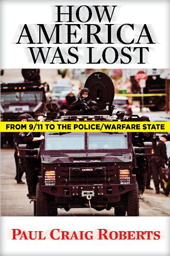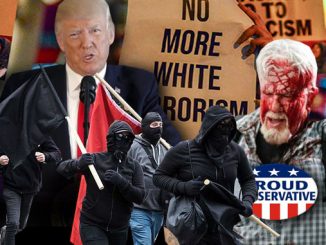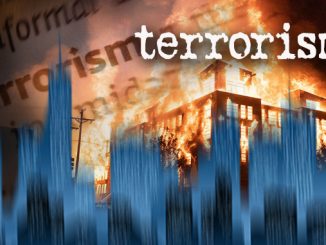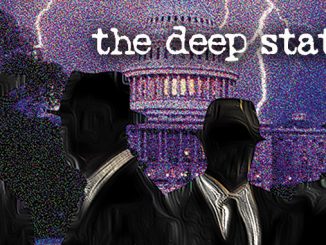
The Justice Department’s revival of the 1968 Anti-Riot Act is designed to suppress unwanted dissent in response to the Charlottesville rally. But the government should put the Anti-Riot Act back to sleep.
By the AFP Legal Staff
For the last 50 years, except for one case, the so-called 1968 Federal Anti-Riot Act lay dormant and forgotten, but now the Justice Department has revived this constitutional monster, awakening it because of media outrage over the Charlottesville turmoil. Its revival represents the greatest current threat to our First Amendment rights.
Last October, teams of FBI agents swooped down on eight young men for allegedly intending to incite a riot and for conspiring to riot. The men are accused of violating 18 U.S.C. §2101 and 18 U.S.C. §2102, the Federal Anti-Riot Act of 1968.
The act was Congress’s heavy-handed response to the anti-war, civil rights, and counterculture disturbances of the late 1960s, particularly the riots in Washington, D.C. that followed the assassination of civil rights activist Dr. Martin Luther King Jr. A pall of smoke still hung over Washington, D.C. and troops circled the Capitol when the act was enacted on April 11. The act was specifically designed to battle social dissent and was based on the idea that sinister groups of “outside agitators” were riling up students and blacks. It was first used to prosecute the Chicago Eight, the leaders of the protests at the 1968 Democratic convention.
The act pushes the limits of the Constitution in many ways. The operative passage reads:
Whoever travels in interstate or foreign commerce or uses any facility of interstate or foreign commerce, including, but not limited to, the mail, telegraph, telephone, radio, or television, with intent—
(1) to incite a riot; . . .
(2) to organize, promote, encourage, participate in, or carry on a riot; or . . .
(4) to aid or abet any person in inciting or participating in or carrying on a riot . . . shall be fined under this title, or imprisoned not more than five years, or both.
A riot is defined as any assembly of three people, one of whom makes a threat against property or people. Think of someone standing in front of a window and picking up a rock. That is a riot under the act. If you were standing next to that potential thrower of a rock, you are a participant in a riot.
The act casts a wide net, proscribing communication along a chain of parties separated by many degrees. It is a felony to encourage, over the telephone or by Internet, some second party to participate in an assembly where a third party makes a threat to the property of a fourth.
Consider the example of Bernie, who sends a quick text: “Hey Alexandra, head down to the rally in front of the bank at 11. Tell Liz to give those bloodsuckers heck.” Bernie is in clear violation of the act despite the fact that Bernie was not even at the rally. In fact, Alexandra doesn’t even have to get the text nor Elizabeth hear the encouragement.
The Act makes Bernie’s mere attempt at encouraging Liz enough for a criminal conviction. Even worse, under a separate paragraph of the act, the attempt is “proof” that you intended to promote a riot when you “crossed state lines” even though the message was sent weeks before. The act is unique in allowing such a chronological separation of intent and overt act.
In the case of the so-called Charlottesville Four, the overt act was buying an airplane ticket to a legal rally. In the case of the California Four, it was renting a van with a credit card and driving on an interstate highway to a legal rally in Berkeley. In both rallies, the defendants clashed with antifa groups, which were trying to disrupt the legal assemblies.
The government is making the “Through the Looking Glass” claim that the eight defendants actually intended to be attacked when they bought the airplane tickets or drove on the interstate highway.

The act also pushes the jurisdictional limits of the Constitution. Once upon a time, the federal government did not involve itself with local issues of brawling or public disorder. Over the years, however, Congress has used the Commerce Clause of the Constitution to expand its power and jurisdiction to control what people could take across state lines, prohibiting the transport of drugs, weapons to be used in a crime, or minors subject to a court order. The act takes the last step in this process. It is not an object or a person that is proscribed from being moved across a state line but a thought or an intent to incite, to encourage, or to promote dissent and discontent, to rebel. Ironically, these are the very crimes that the founders of our nation and many of the authors of the First Amendment personally committed.
The Anti-Riot Act debases the dignity of our government. The act has our government stoop to see if one of three people might be incited to throw a rock, if a rebel writes an unsent letter full of tears and anger, if students talk of a different future on the Internet. The act questions the very thoughts of our citizens as they buy an airplane ticket or drive on an interstate highway. While concern to prevent the type of tragedy that occurred in Charlottesville is understandable, the Anti-Riot Act is a reactionary, repressive law that subverts the principles upon which our nation was created.
Because the act is reactionary and repressive it is susceptible to misuse and selective prosecution against any politically unpopular group. While it was created to bash leftist hotheads and civil rights activists, the Justice Department has bowed to political pressure and resurrected the act to bash the alt-right. With the current prosecution the government has averted its eyes from the clear evidence that antifa groups attacked and disrupted the pro-Trump rallies in Huntington Beach and Berkeley and the Charlottesville alt-right assembly. Among the hundreds of rowdy people at the three political rallies, only the eight have been charged by the government.
In order to justify the current prosecutions, the Justice Department twists both facts and law. In its “Omnibus Response to [Charlottesville] Defendants’ Motion to Dismiss,” the Justice Department asserts, “This case is not about free speech or the right to assemble for political purposes.” This is a bold claim considering the Anti-Riot Act was promulgated precisely to control speech that “incited, promoted, encouraged, or organized,” that the government has accused these defendants of the political speech crimes of incitement, promotion, and encouragement, and that the courts have already dismissed similar governmental obfuscation.
In the leading case from 1972 reviewing the Anti-Riot Act, United States v. Dellinger (Dellinger was one of the Chicago Eight), Judge Fairchild discussed the obvious connection between the act and the First Amendment.
As to the Anti-Riot Act, the government at times argues that travel with intent and not expression is the “gravamen of the offense” and that, therefore, the doctrines of the First Amendment are not relevant to our determination of constitutionality. We are unable to accept this argument. . . .
A realistic approach compels application of a First Amendment test to a statute which punishes activity leading up to and furthering a riot, for at least two reasons. One is that rioting, in history and by nature, almost invariably occurs as an expression of political, social, or economic reactions, if not ideas. The rioting assemblage is usually protesting the policies of a government, an employer, or some other institution, or the social fabric in general, as was probably the case in the riots of 1967 and 1968 which are the backdrop for this legislation. A second reason is that a riot may well erupt out of an originally peaceful demonstration which many participants intended to maintain as such.
It is by expression, in whatever form, that causation adequate to bring on punishment must be most likely to occur.

Since 1968 and the Dellinger opinion, the Supreme Court has expanded First Amendment protections for political speech. Rather than follow the law, the Justice Department pretends the Anti-Riot Act has nothing to do with the First Amendment. In fact, the current prosecution threatens to unravel 50 years of First Amendment progress.
The Justice Department should step back and reconsider the dangerous effects of this case on First Amendment rights. Instead, the Justice Department has made the bureaucratic response: Try to justify the prosecution by distorting facts. To read the government’s response one would get the impression that not a single antifa-affiliated person showed up to disrupt the Unite the Right rally or that the Charlottesville police, after having promised to keep the two sides separated, ensured the confrontation. There is no indication that the highly unpopular guys from out of town are being scapegoated for the acts of others.
This underscores another flaw with the act: It is not designed for the current conditions of polarization politics. The legislative history of the Anti-Riot Act manifests an intent on the part of a legislative faction to destroy what was believed to be a close-knit group of outside agitators. The idea that the riot would be caused by people “incited” to attack the organizers was not considered by Congress in 1968. The Justice Department is continuing this error. The government is essentially taking the position that the organizers and attendees of a legal assembly can become criminally liable if scuffles break out at the event, even if they are caused by the acts of counter-protestors.
Congress spread its net too widely when drafting the Anti-Riot Act. It was always constitutionally questionable, but its defects have become manifest in the last 50 years, given recent Supreme Court rulings on protected expression. Congress did not consider that its definition of riot was too broad, that its imposition of liability was too expansive, or that its definition of intent was too amorphous and inclusive, all to the effect of denying First Amendment protections to marginal groups most in need of them.
The government should put the Anti-Riot Act back to sleep.




